I still remember the first time I spotted this dish in my favorite K-drama, the lead actress was mixing this incredibly appetizing Korean Ground Beef bowl while her crush watched in awe (sana all, diba?).
As a Pinoy working mom who's always juggling between budget and wanting to serve something special, I couldn't believe how this recipe saved my weeknight dinners. This Korean Ground Beef, or what I lovingly call Korean-style giniling, has become our family's absolute favorite. Imagine your usual giniling but leveled up with that sweet-savory Korean BBQ sauce that makes everyone run to the dining table fast.
When the aroma of garlic and sesame hits your kitchen, your neighbors might think you've opened a Korean restaurant. It's surprisingly budget-friendly, ready in just 25 minutes, and uses ingredients you can easily find in your local supermarket.
As someone who's made this countless times, I can tell you – this recipe is your ticket to feeling like you're dining in Seoul while staying right in your own Pinoy kitchen.
Jump to:
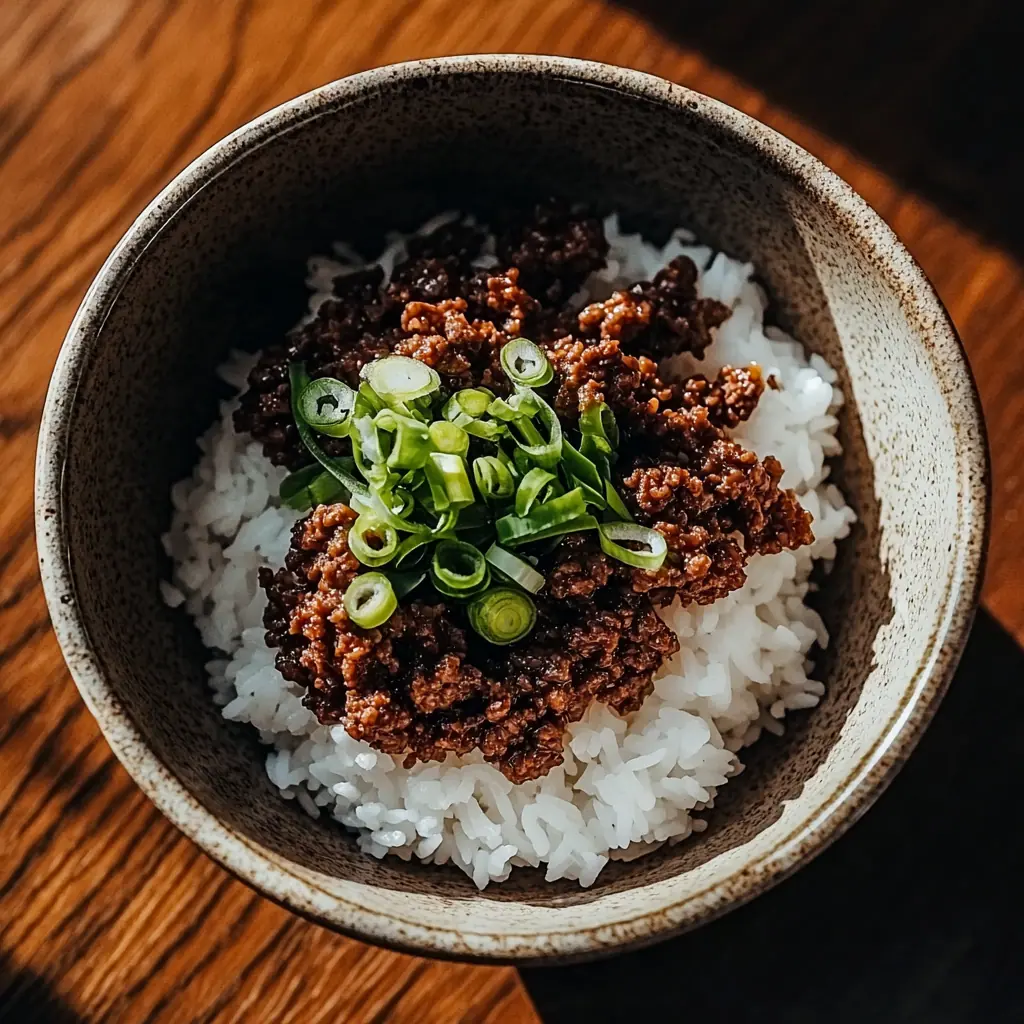
Why You'll Love This Recipe
- Ready in just 25 minutes - perfect for busy weeknights
- Uses affordable ground beef instead of expensive Korean BBQ cuts
- One-pan recipe means minimal cleanup
- Versatile - serve as rice bowls, lettuce wraps, or fusion tacos
- Kid-friendly with adjustable spice levels
- Meal-prep friendly - stores and reheats beautifully
Ingredients
These ingredients create the perfect balance of traditional Korean flavors in a simple, accessible way. Ground beef provides a budget-friendly protein that browns beautifully and absorbs flavor quickly.
The combination of soy sauce and brown sugar creates that signature sweet-savory balance Korean cuisine is known for, while sesame oil adds a distinctive nutty aroma that transforms the dish. Fresh garlic and ginger form an aromatic base that enhances the meat, and red pepper flakes add gentle warmth without overwhelming heat.
Green onions contribute a mild, fresh flavor and appealing color contrast. Together, these ingredients create a complex-tasting dish that comes together in minutes using items most home cooks already have on hand.
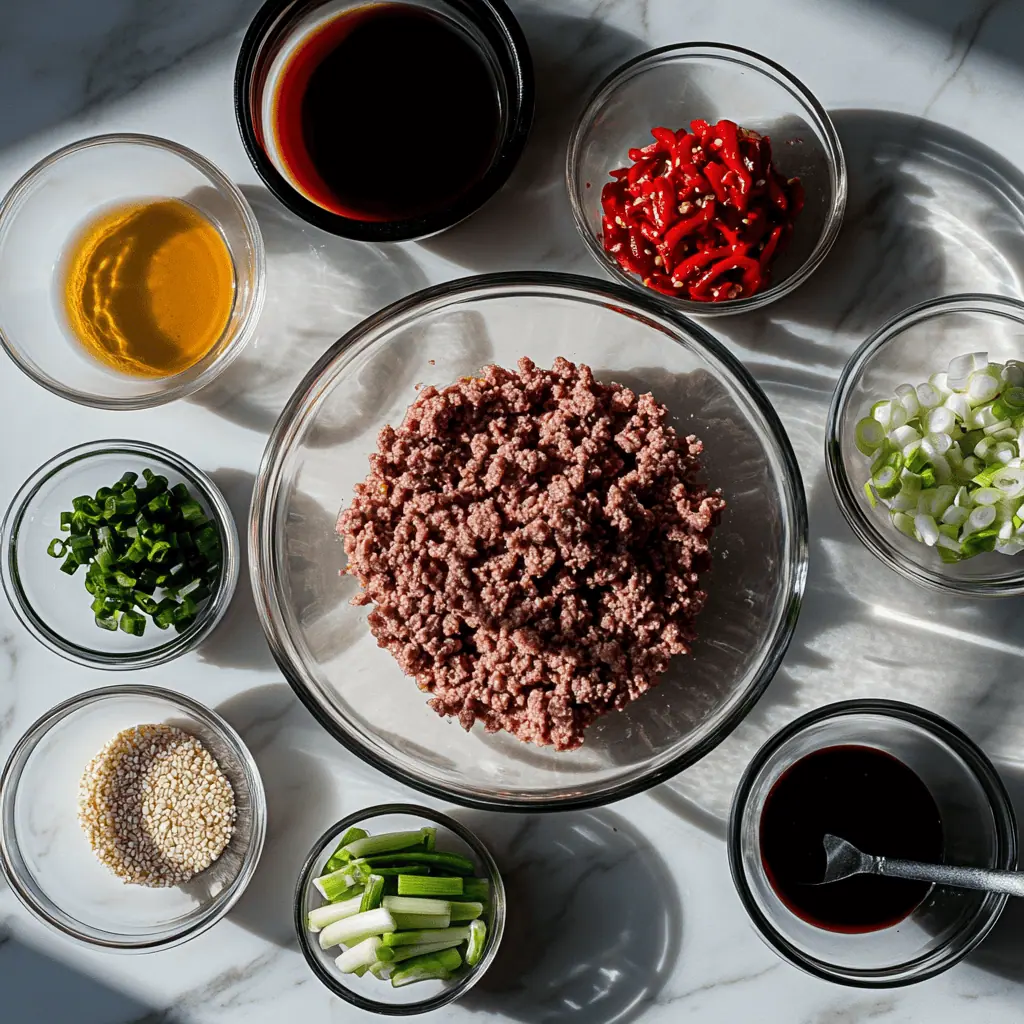
- 1 pound (500g) ground beef, 80/20 lean-to-fat ratio recommended
- 1 tablespoon vegetable oil
- 2 cloves garlic, minced
- 1 thumb-sized ginger, minced
- ¼ cup green onions, chopped
- ¼ cup low-sodium soy sauce
- 3 tablespoons brown sugar
- 1 tablespoon sesame oil
- ½ teaspoon red pepper flakes
- Steamed white rice for serving
- Toasted sesame seeds for garnish
- Lettuce leaves for wrapping (optional)
Equipment
- Large skillet or wok - For evenly cooking the beef and sauce (A 10-12 inch skillet works best)
- Measuring spoons and cups - For accurate ingredient proportions
- Cutting board and knife - For mincing garlic, ginger, and chopping green onions
- Wooden spoon or spatula - For breaking up the meat while cooking
- Small mixing bowl - For combining sauce ingredients
- Rice cooker - For preparing perfect steamed rice to serve with the beef
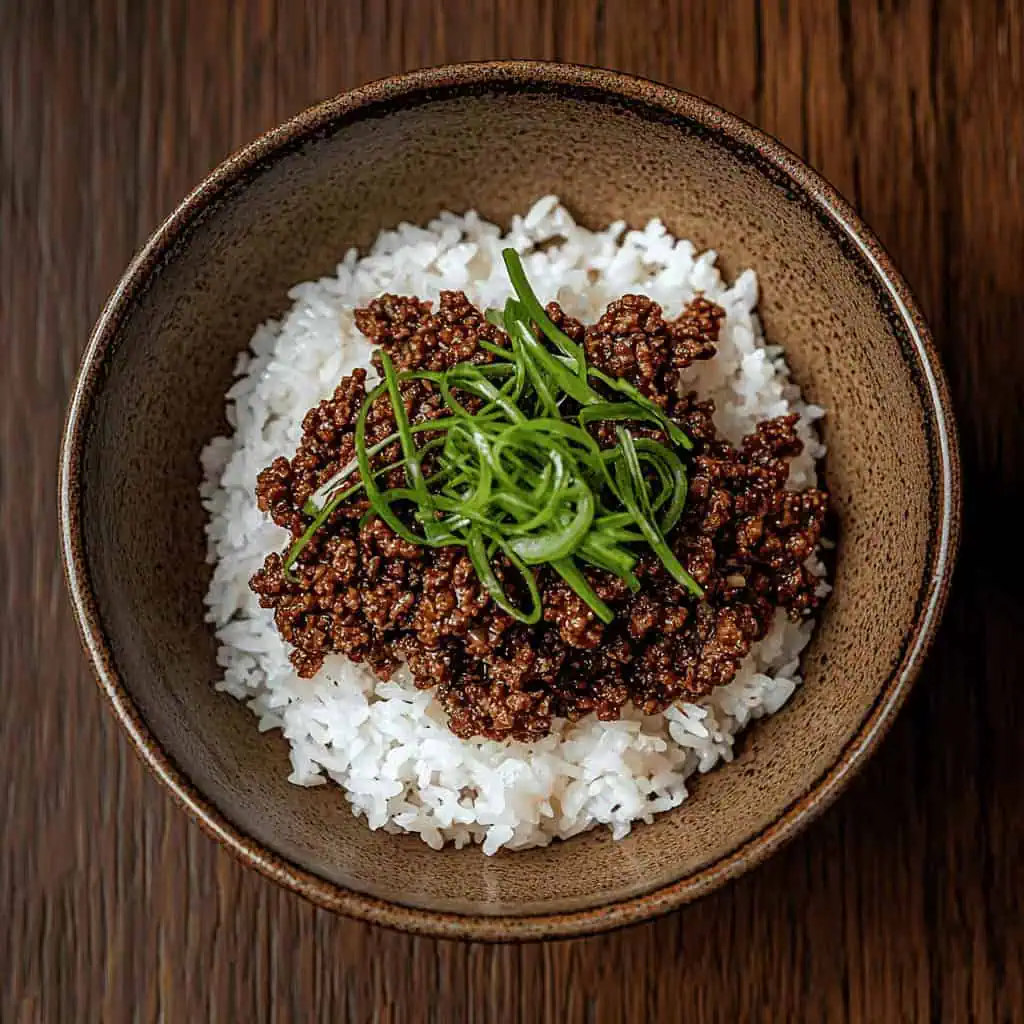
How To Make
- Bring your ground beef to room temperature before cooking. This helps the meat brown better and cook more evenly.
- Heat your large pan over medium heat. Once hot, add the cooking oil and swirl to coat the bottom of the pan.
- Add minced garlic and ginger to the hot oil. Gently stir them around the pan until fragrant, about 30-45 seconds. Be careful not to let them burn as this will make your dish bitter.
- Add ground beef to the pan. Break it apart with your spatula into small, even pieces. Let the meat cook over medium-high heat until it starts to brown, about 5-7 minutes. Avoid stirring too frequently to allow the meat to develop a nice caramelized color.
- While the meat is cooking, prepare your sauce. In a bowl, combine low-sodium soy sauce, brown sugar, sesame oil, and red pepper flakes. Mix well until the sugar dissolves.
- Once the meat has browned, you can drain off excess fat if desired. Keep about 1 tablespoon of fat in the pan for flavor. Return the pan to medium-low heat.
- Pour prepared sauce over the browned meat. Stir well to coat all the meat evenly. Let it simmer, stirring occasionally, until the sauce thickens and becomes glossy, about 3-5 minutes.
- Add chopped green onions to the pan. Stir gently and cook for one more minute until the onions slightly wilt.
- Taste your dish and adjust the seasoning if needed. You can add more soy sauce for saltiness, brown sugar for sweetness, or red pepper flakes for heat.
- Remove the pan from heat and sprinkle toasted sesame seeds over the top. Serve immediately while hot over freshly steamed rice.
- For the best experience, set the table with optional garnishes like fresh lettuce leaves for wrapping, additional sliced green onions, and extra sesame seeds. You can also serve with kimchi on the side if available.

Tips from Lola's Kitchen
- Room Temperature Meat: Always bring your ground beef to room temperature before cooking for better browning and more even cooking.
- Ginger Hack: Freeze fresh ginger for easy grating and longer storage - no need to peel it first!
- Meat Selection: Choose 80/20 ground beef for best flavor and texture - the fat adds essential flavor.
- Brown Sugar Tip: Dark brown sugar adds deeper caramel notes to the sauce.
- Sauce Secret: Add 1 tablespoon of mirin for a more authentic Korean flavor if you have it on hand.
- Perfect Caramelization: Let the meat brown properly before adding the sauce - this is where much of the flavor develops.
- Rice Preparation: Start cooking your rice first, so it's ready when the beef is done.
Substitutions
- Ground Beef: Can be replaced with ground turkey, chicken, or pork
- Brown Sugar: Honey or maple syrup work well as alternatives
- Soy Sauce: Coconut aminos make a great gluten-free substitute
- Red Pepper Flakes: Can use gochugaru (Korean chili flakes) or cayenne pepper
- Fresh Ginger: ¼ teaspoon ground ginger can be used in a pinch
- Vegetable Oil: Any neutral cooking oil like canola or avocado oil works fine
Troubleshooting
- Sauce Too Sweet?
- Add 1 teaspoon rice vinegar to balance sweetness
- Increase red pepper flakes for more heat
- Add a dash of black pepper for complexity
- Meat Too Dry?
- Use higher fat content beef next time
- Be careful not to overcook the beef
- Add 2 tablespoons of water when mixing in the sauce
- Sauce Not Thickening?
- Increase heat slightly to help evaporation
- Cook uncovered to allow moisture to escape
- Mix 1 teaspoon cornstarch with the sauce before adding
- Flavors Not Popping?
- Add a small splash of rice vinegar for acidity
- Include a teaspoon of gochujang paste for depth
- Finish with a light drizzle of sesame oil before serving
Storage & Reheating
- Refrigerator: Store in an airtight container for 3-4 days
- Freezer: Can be frozen for up to 3 months in freezer-safe containers
- Reheating in Microwave: Heat for 1-2 minutes, stirring halfway through
- Reheating on Stovetop: Warm over medium heat for about 5 minutes
- Moisture Tip: Add 1 tablespoon of water when reheating to maintain juiciness
- Meal Prep: Portion into containers with rice for grab-and-go lunches
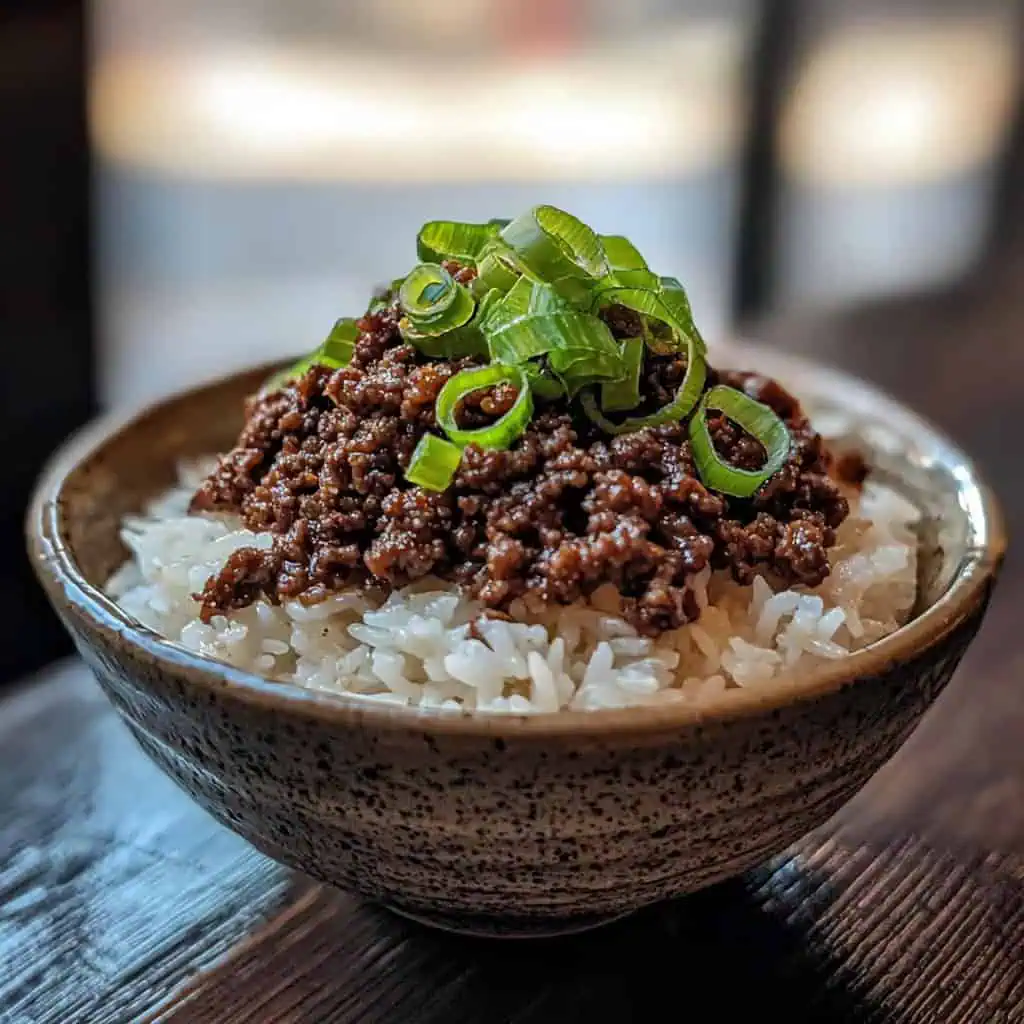
FAQ
Can I make this spicier?
Absolutely! Double the red pepper flakes or add gochujang paste (Korean chili paste) for more heat.
How do I make this keto-friendly?
Replace brown sugar with monk fruit sweetener or erythritol and serve over cauliflower rice instead of regular rice.
Can I prep this ahead of time?
Yes! The sauce can be prepared up to 3 days ahead, and the entire dish reheats well. Perfect for meal prep!
Why isn't my meat caramelizing properly?
Make sure your pan is hot enough before adding the meat, don't overcrowd the pan, and avoid stirring too frequently.
How can I add more vegetables to this dish?
You can add shredded carrots, spinach, mushrooms, or bean sprouts during the last few minutes of cooking.
What's the best way to serve this for a gathering?
Set up a DIY Korean beef bowl bar! Provide rice, lettuce cups, various toppings, and let guests build their own bowls.
Can this be made vegetarian?
Yes, substitute the ground beef with crumbled firm tofu or plant-based ground meat alternatives.
Related
Looking for other recipes like this? Try these:
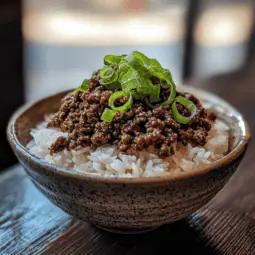
Korean Ground Beef (Giniling na Baka na Korean-Style)
Ingredients
Primary Ingredients (Mga Pangunahing Sangkap):
- 1 pound 500g ground beef (giniling na baka), 80/20 lean-to-fat ratio recommended
- 1 tablespoon vegetable oil
- 2 cloves garlic minced (2 butil ng bawang, dinurog)
- 1 thumb-sized ginger minced (luya, dinurog)
- ¼ cup green onions chopped (sibuyas, hiniwa)
Sauce (Sarsa):
- ¼ cup low-sodium soy sauce toyo
- 3 tablespoons brown sugar asukal na pula
- 1 tablespoon sesame oil
- ½ teaspoon red pepper flakes
For Serving (Para sa Paghahain):
- Steamed white rice kanin
- Toasted sesame seeds
- Lettuce leaves for wrapping
Instructions
- Bring your ground beef to room temperature before cooking. This helps the meat brown better and cook more evenly.
- Heat your large pan or kawali over medium heat (katamtamang init, 176°C/350°F). Once the pan feels hot when you hold your hand above it, add the cooking oil (mantika) and swirl to coat the bottom of the pan.
- Add your minced garlic (dinurog na bawang) and ginger (luya) to the hot oil. Gently stir them around the pan until you smell their aroma (hanggang lumabas ang mabangong samyo), about 30-45 seconds. Be careful not to let them burn (huwag hayaang masunog) as this will make your dish bitter.
- Add your ground beef (giniling na baka) to the pan. Break it apart with your spatula or sandok into small, even pieces. Let the meat cook over medium-high heat (malakas-katamtamang init, 190°C/375°F) until it starts to brown. This will take about 5-7 minutes. Avoid stirring too frequently to allow the meat to develop a nice caramelized color.
- While the meat is cooking, prepare your sauce. In a bowl, combine your low-sodium soy sauce (toyo), brown sugar (asukal na pula), sesame oil, and red pepper flakes. Mix well until the sugar dissolves (hanggang matunaw ang asukal).
- Once the meat has browned, you can drain off excess fat if desired (pwedeng alisin ang sobrang mantika). Keep about 1 tablespoon of fat in the pan for flavor. Return the pan to medium-low heat (mahina-katamtamang init, 160°C/320°F).
- Pour your prepared sauce over the browned meat. Stir well to coat all the meat evenly (haluin ng mabuti para pantay na mabalutan ng sarsa ang karne). Let it simmer, stirring occasionally, until the sauce thickens and becomes glossy (hanggang lumapot at kuminang ang sarsa), about 3-5 minutes.
- Add your chopped green onions (sibuyas) to the pan. Stir gently and cook for one more minute until the onions slightly wilt (hanggang malanta ng kaunti ang sibuyas).
- Taste your dish and adjust the seasoning if needed (timplahan kung kinakailangan). You can add more soy sauce for saltiness, brown sugar for sweetness, or red pepper flakes for heat.
- Remove the pan from heat and sprinkle toasted sesame seeds over the top. Serve immediately while hot over freshly steamed rice (mainit na kanin).
- For the best experience, set the table with optional garnishes like fresh lettuce leaves (sariwang dahon ng letsugas) for wrapping, additional sliced green onions, and extra sesame seeds. You can also serve with kimchi on the side if available.
- If you plan to save leftovers, let the dish cool completely (hayaang lumamig nang husto) before transferring to an airtight container. It will keep in the refrigerator for 3-4 days. When reheating, add a splash of water (kaunting tubig) to maintain moisture, and heat either in the microwave for 1-2 minutes or in a pan over medium heat until thoroughly warm.
Tips from Lola's Kitchen
- Ginger Hack: Freeze fresh ginger for easy grating and longer storage
- Meat Selection: Choose 80/20 ground beef for best flavor and texture
- Brown Sugar Substitute: Dark brown sugar adds deeper caramel notes
- Temperature Tip: Room temperature meat browns better than cold
- Sauce Secret: Add 1 tablespoon of mirin for authentic Korean flavor
Nutrition
The Story Behind Korean Ground Beef
Growing up in a Filipino household where giniling was a weekly staple, I never imagined that a Korean twist on our humble ground beef would become my family's new obsession. Like many Filipinos, my journey with Korean ground beef began through endless nights of binge-watching K-dramas, where characters would whip up this mouthwatering dish in their perfectly styled apartments. What caught my attention wasn't just how delicious it looked, but how similar yet different it was from our own giniling na baka.
This dish, known in Korea as "Gochugaru Dubu Bulgogi" when made with premium beef, has evolved into a more practical, budget-friendly version using ground beef. It perfectly represents the wave of Korean cuisine adaptation in Filipino kitchens – where we take inspiration from traditional Korean flavors but make them work with our local ingredients and busy schedules. The genius lies in how it combines familiar Asian pantry staples like soy sauce and garlic with distinctly Korean elements like sesame oil and gochugaru (Korean red pepper flakes).
What makes this recipe particularly special in Filipino homes is how it bridges two beloved culinary traditions. We Filipinos love our rice meals, and this dish, with its perfect balance of matamis-alat (sweet-salty) flavors, speaks directly to our taste buds. It's become a popular baon option for office workers and students alike, offering that Korean food experience without the hefty restaurant price tag. In fact, in my own barangay, I've noticed more and more neighbors asking for the recipe after smelling the distinctive aroma of sesame oil and caramelized beef wafting from my kitchen!
The beauty of Korean ground beef lies in its versatility and how it's evolved in Filipino kitchens. Some local cooks add a splash of calamansi for that Pinoy twist, while others serve it with kimchi they learned to make from YouTube tutorials. It's become more than just a recipe – it's a testament to how Filipino cooking continues to evolve, embracing international flavors while maintaining our love for practical, family-style meals that bring everyone to the table.
In many ways, this dish represents the modern Filipino kitchen – where traditional cooking techniques meet international inspiration, where budget consciousness meets flavor exploration, and where quick cooking meets wholesome family meals. Whether you're a K-drama fan wanting to recreate those mouthwatering scenes or a busy parent looking for a new weeknight dinner champion, this Korean ground beef recipe proves that sometimes, the most memorable dishes come from blending the best of different culinary worlds.
Remember: Perfect Korean ground beef isn't just about the sauce ratio—it's about achieving that ideal caramelization where the meat is slightly crispy while remaining juicy, and the sauce reduces to a glossy coating that makes plain rice irresistible.
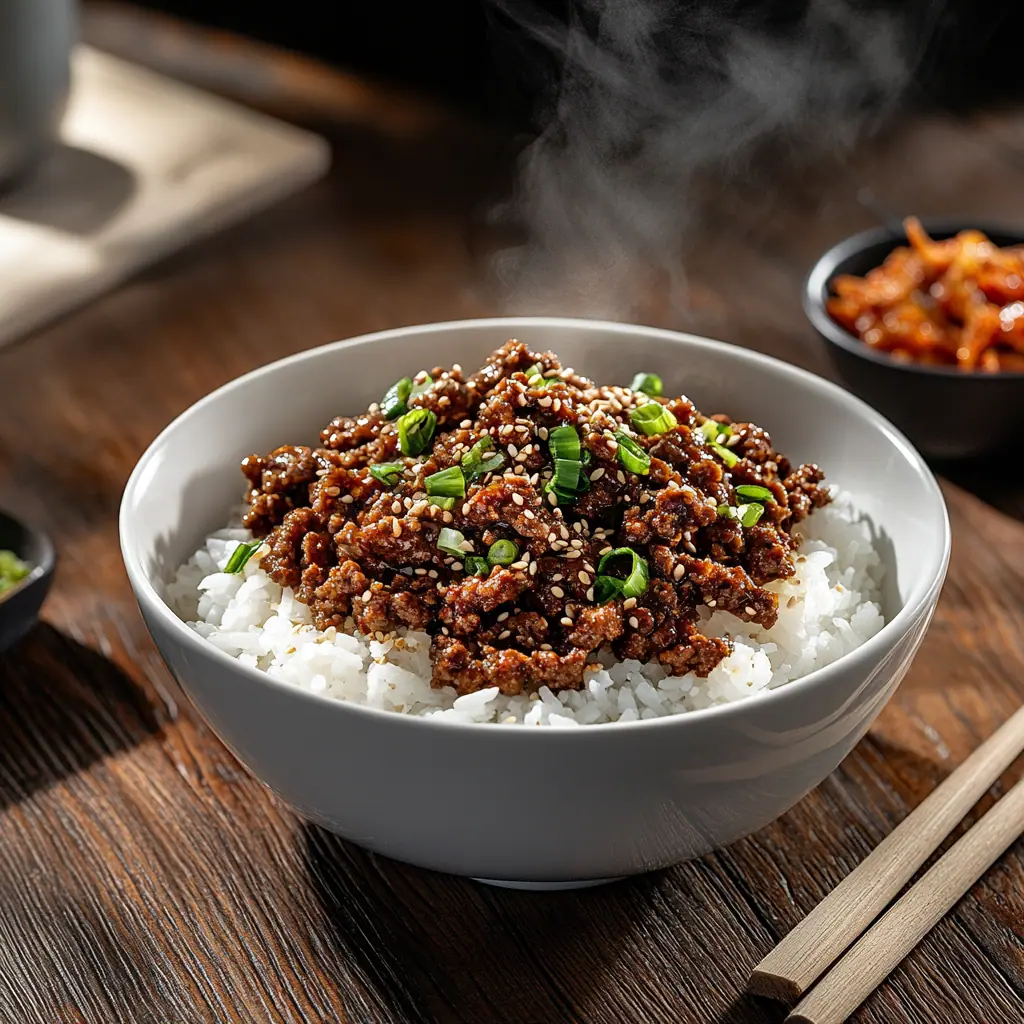









Comments
No Comments